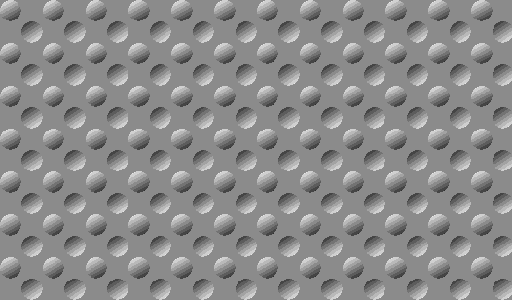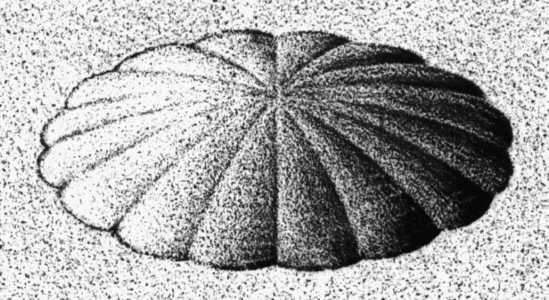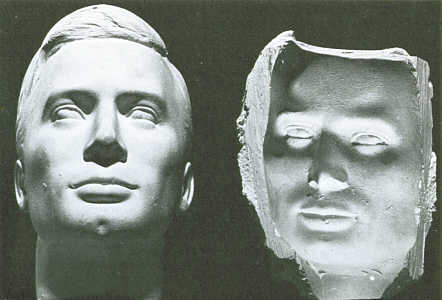Vision and Depth Perception (2)
Light, shadow, shading and brightness, and colour consistency play an important part in our perception of objects. We are used to objects being lit from above and we use this to define the depth and shape of them.

Bumps
A two dimensional image showing three dimensional properties

Is this object convex or concave?
What if we turn the image around?

We are also usually very good at judging the color of objects. A piece of coal, for example, may reflect ten times as much light as snow in shade, making it appear very much brighter. But we can still tell what color it is. (Mayor, 2003) Some experimenters have found that when the brightness of a surface is kept constant, but the illumination of the surrounding area is varied then people think the brightness of the test surface also varied. (Wallach, 1948)

Checker Shadow Illusion
Believe it or not, the squares marked A and B are the same colour
Image: Adelson, Edward H. (1995) MIT Perceptual Science Group. Retrieved August 27, 2003
from
http://www-bcs.mit.edu/people/adelson/checkershadow_illusion.html
Although B is as dark as A it is lighter than its neighbours.
This illusion works because although we are not very good as a physical light meter we are very good at interpreting
objects that are in shadow (Adelson, )
We are used to viewing objects in a certain way, especially faces. When a hollow face mask is viewed, the brain has great difficulty in presenting an inside-out face and we persist in seeing a normal view of the face. (Gregory, 1970)

Mould of a face
The face on the right is the inside of the mould shown on the left
Motion parallax is the apparent motion of objects relative to us. If we are moving or even simply moving our head from side to side, objects that are closer than our fixation point appear to move backwards. Those further way appear to move in the same direction. Objects that are further from away seem to travel more slowly than those nearer us.
Accommodation is the final monocular clue and refers to the change in shape of the eye’s lens to bring an object into focus and the feedback from the muscles we use to bring about that focusing action. Accommodation is practically useless for judging distances of more than three metres (twelve feet) from us but can be very useful for objects within arms reach.
From these monocular clues it is clear that, contrary to popular belief, someone who has only the use of one eye does have depth perception.
This page created 29th August 2003, last modified 28th February 2016